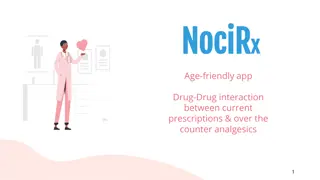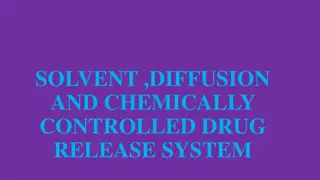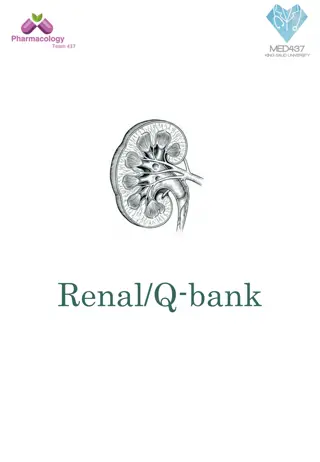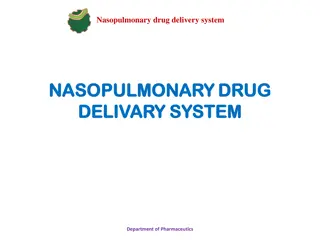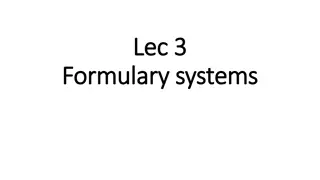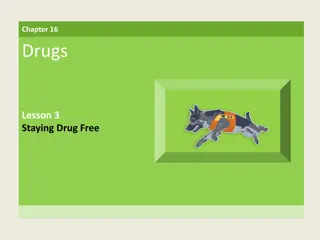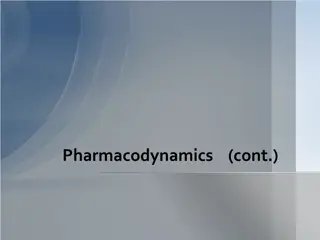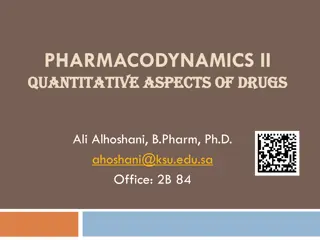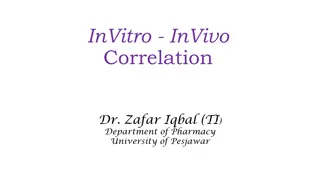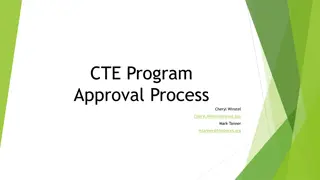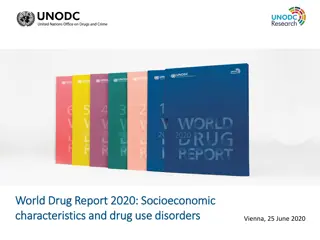IAEC Approval Presentation: Drug Discovery Study Overview
This presentation template provides guidelines for scholars to prepare and present their research study to the IAEC for approval. It includes specific slides for introducing the project, stating objectives and hypotheses, detailing animal requirements, explaining the rationale for animal usage, and outlining the experimental study plan. Scholars are instructed to adhere to the provided template and submit their final presentation by the specified deadline.
Download Presentation

Please find below an Image/Link to download the presentation.
The content on the website is provided AS IS for your information and personal use only. It may not be sold, licensed, or shared on other websites without obtaining consent from the author.If you encounter any issues during the download, it is possible that the publisher has removed the file from their server.
You are allowed to download the files provided on this website for personal or commercial use, subject to the condition that they are used lawfully. All files are the property of their respective owners.
The content on the website is provided AS IS for your information and personal use only. It may not be sold, licensed, or shared on other websites without obtaining consent from the author.
E N D
Presentation Transcript
Imp Instructions to the scholars Use the template Given in the following slides i.e. Slide no. 2 to 9 to prepare your presentation. Max no. of slides in a presentation is 8 to 9 including Title & Thank you slides. Delete this instruction Slide before submitting. Save the final presentation either as .pptx or .pdf file. Name of the file should be like yourname_dept.name. Send this file to dddu@nia.edu.in positively before 22ndAugust 2021. Should you have any doubts and queries, contact I/C DDDU. Come prepared about your study. 1
Presentation for IAEC Approval on TITLE OF THE STUDY AS MENTIONED IN SYNOPSIS Submitted & Presented to IAEC Drug Discovery and Development Unit, NATIONAL INSTITUTE OF AYURVEDA Deemed To be University (De Novo) Ministry of AYUSH, Govt. of India Principle Investigator NAME OF THE SCHOLAR MD / PHD Scholar, Department of .., N.I.A. 2
Introduction Introduction about Project Drug and Experimental Model in 4-5 Lines 3
OBJECTIVES, HYPOTHESES Mention objectives, hypotheses and justification of the study. 4-5 lines. 4
ANIMALS REQUIRED (Mention the no. of animals reqd. in the following format) STUDY & GROUPS SPECIES & STRAIN AGE & WEIGHT GENDER F / M NUMBER OF ANIMALS For example- Toxicity Study, 1 gr. Albino Wistar Rats 12-24 weeks, 125-150 gms 3 M, 3 F 06 x1 = 06 For ex Antidiabetic study, 4 groups Albino Wistar Rats 12-24 weeks, 125-150 gms F/M 06x4 = 24 5
Rationale for animal usage (Answer the following 4 questions) Q. Why is animal usage necessary for these studies? Suggestive Answer Due to the anatomical similarity in between selected species and human. Unavailability of in vitro experimental model. Our plant sample requires to establish safety and Efficacy. Q. Whether similar study has been conducted on in vitro models? If yes, describe the leading points to justify the requirement of animal experiment. Suggestive Answer No. Q. Why are the particular species selected? Suggestive Answer Wistar Rats are most common experiment animal species having the best reproducibility of results and reliable models for pharmacological activity evaluation of natural products. Q. Why is the estimated number of animals essential? Suggestive Answer According to OECD guideline 423 3 animal is necessary in each group for conduct an oral acute toxicity study and six animal is necessary in each group for validation and compete statically analysis. That s why we required 30 rats. 6
Plan of Experimental Study Use 1 or 2 slides if reqd (Give the following details examples below) A. Oral Acute Toxicity Study: Oral Acute toxicity of Trial drug Name will be conducted according to OECD guideline 423. Study Design: Three animals will be selected for each group. The dose level will be used as follows: Group 1 : Three Wistar rats will receive Trial drug Name . 3000/kg/PO. Group 2 : Three Wistar rats will receive Trial drug Name . 2000 mg/kg/ PO. Administration of Doses: The test formulation will be administered in a single dose by gavages using oral feeding needles. Animal will kept fasting prior to dosing. Following the period of fasting, the weight of each animal will be measured and the test formulation will be administered. Observation: Single dose will be administered and Behavior, Hematological and Histo-pathological evaluation will be done according to OECD Guideline. B. Paracetamol induced Hepatotoxicity. Twenty four Wistar Rats will receive drug 1000mg/kg Paracetamol orally for seven days for inducing of Hepatotoxicity. Twenty four wistar Rats will be divided into four groups. Each groups contains six rats. Group I (Negative Control): Six Wistar Rats will receive Distilled Water(DW) 5ml/kg/PO for 30 days. Group II (Standard Control): Six Wistar Rats will receive Standard drug/dose in mg/kg/PO for 30 days. Group III (Test Group I): Six Wistar Rats will receive Trial drug one/dose in mg/kg/PO for 30 days. Group IV (Test Group II): Six Wistar Rats will receive Trial drug 2 / dose in mg/kg/PO for 30 days. Evaluation Parameters:- Liver Function Test Histopathology of Liver 7
Other Details Invasive/stressful/ non-invasive procedures : Write the applicable one. Injectable Intervention (Doses, Site, Volume): Yes or no. Blood withdrawal Details: Yes/ No. Volumes: Sites: Radiation (dosage and schedules): NA Nature of compound/Broad Classification of drug/NCE: Herbal / Synthetic Does the protocol prohibit use of anesthetic or analgesic for the conduct of painful procedures?- Yes/ No. Will survival surgery be done?- Yes /No Describe method of Euthanasia (If required in the protocol): High dose of anesthetic (Halothane) Method of carcass disposal after euthanasia: Biomedical waste disposal 8





